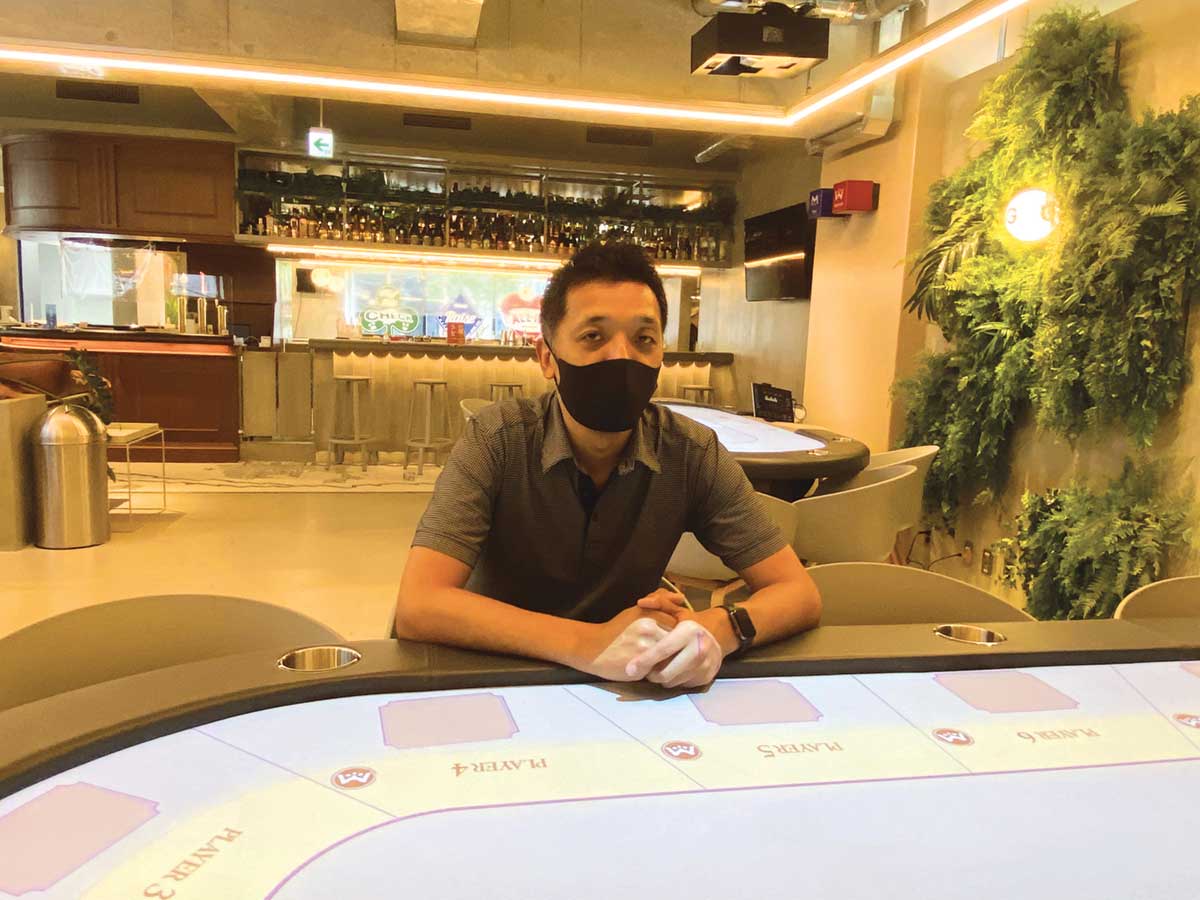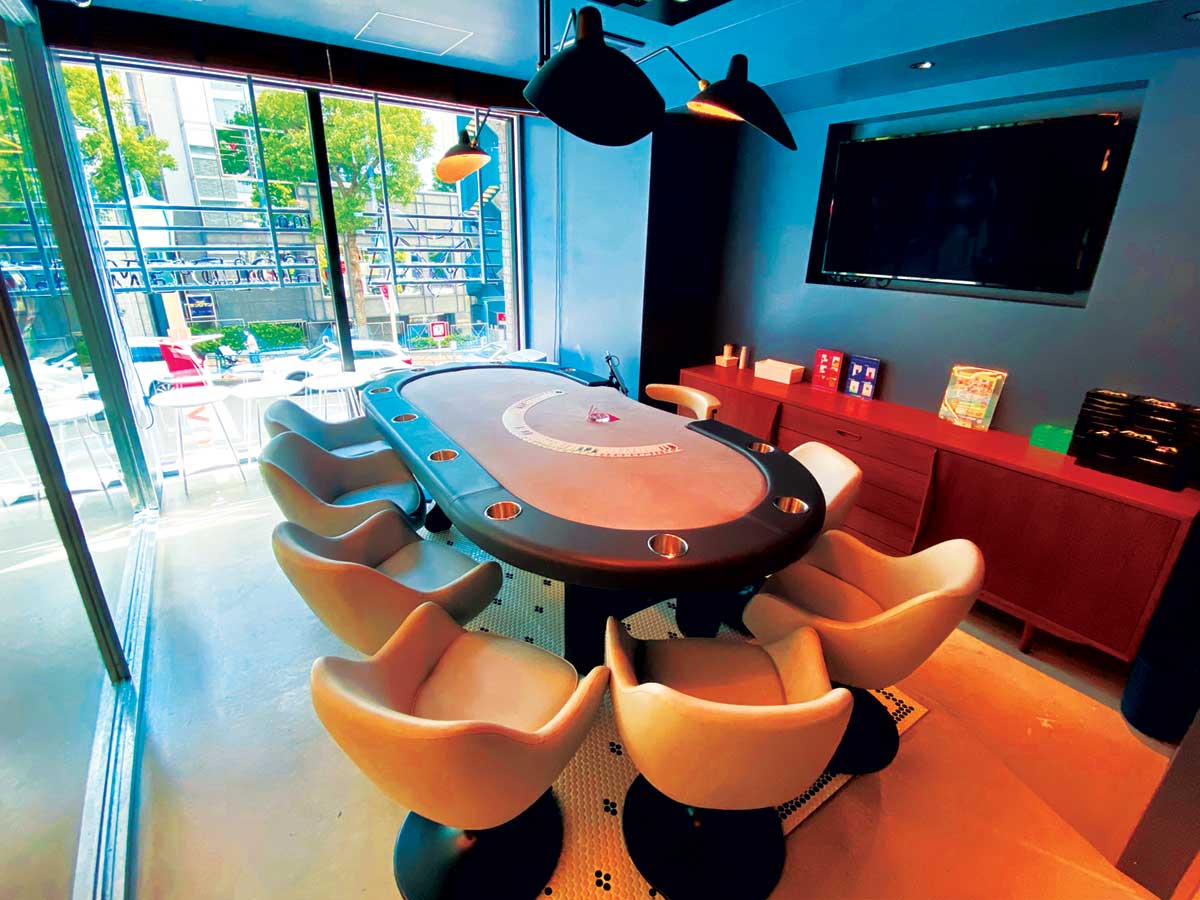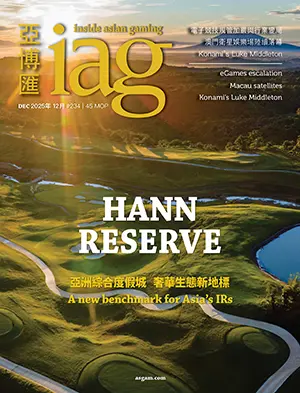With a new Tokyo poker room and an innovative new poker table to match, Japan’s Sammy Corporation is leading a surge in poker’s popularity throughout Japan.
Poker is hot right now, swirling like a tornado across Japan. The focus is on Texas Hold’em, by far the world’s most popular modern-day card game and enjoyed, according to some estimates, by more than 100 million people worldwide.
 Among the companies helping push Japan’s poker cause right now is Tokyo-based amusement manufacturer Sammy Corporation, a subsidiary of pachinko supplier and integrated resort investor Sega Sammy Holdings. In June of this year, Sammy launched its new poker business “m”, with the company stating at the time, “We have taken on a number of challenges in the pachinko and pachislot business, leading innovative technology in the industry. We are utilizing the know-how accumulated in that process to launch ‘m’, a new entertainment business following the pachinko and pachislot business to continue to provide exhilarating experiences to the world.”
Among the companies helping push Japan’s poker cause right now is Tokyo-based amusement manufacturer Sammy Corporation, a subsidiary of pachinko supplier and integrated resort investor Sega Sammy Holdings. In June of this year, Sammy launched its new poker business “m”, with the company stating at the time, “We have taken on a number of challenges in the pachinko and pachislot business, leading innovative technology in the industry. We are utilizing the know-how accumulated in that process to launch ‘m’, a new entertainment business following the pachinko and pachislot business to continue to provide exhilarating experiences to the world.”
On 1 July, the smartphone app “m Hold’em” was released, and in rapid succession the company opened “m HOLD’EM Meguro”, an amusement poker house in Meguro Ward, Tokyo. Business is going well.
IAG spoke with Sammy’s new DX Promotion Division Manager Yasukatsu Ito and his second-in-charge, Atsushi Sakino, about “m” at the newly opened Meguro facility.
Shintaro Kamimura: Thank you for speaking with us today. Where did the concept of “m” come from?
Yasukatsu Ito: Texas Hold’em is a popular mind sport with a global player population of over 10 million. We noticed that despite the simple rules yet complex strategic competition of the game, it still hadn’t gained traction in Japan. We believed that if we could implement solid branding and image strategy, poker could also be accepted as a pastime in Japan in the same way that mahjong, shogi and go are.
In order to start the business, we spent one year on market research to thoroughly elucidate why the game wasn’t popular in Japan, despite the appeal of competition. From there we designed the brand and formed teams for each business, such as developing the app and venue.

SK: Please tell us about the growing popularity of the “m” Hold’em poker app.
YI: When creating the app, we really paid special attention to a design that could be enjoyed by new Texas Hold’em players. We designed the user interface so that anyone used to using apps could play intuitively and also hired a popular illustrator and voice artists to gain more interest in the app.
According to Ito, the poker population in Japan is between 800,000 and 1 million. The potential for greater popularity is apparent with the 600,000 subscribers to a YouTube channel run by a popular Japanese poker player. The “m” Hold’em app boasts 500,000 downloads already, far exceeding the original target.
“m” Hold’em is free to play and holds qualifiers for live events such as the recently completed World Poker Tour Japan (WPTJ) and the First Spo-Nichi Poker Tournament Japan Series. The WPTJ main event, cosponsored by Sammy, has a main event prize pool of JPY 10 million and the winner wins sponsorship to a live, overseas WPT event. That means winning WPTJ could eventually lead to a multi-million dollar payday.
For the latest WPTJ in September there were 110,000 entries to qualifiers held on “m” Hold’em. But in order to increase the number of players in Japan and send a steady stream to the world stage, it is necessary to expand the poker range.
“We plan to continue holding exciting events and collaborating with appealing IP,” Sakino offers.
 Although poker is known worldwide as a form of gambling, playing for real money remains illegal in Japan. Of course, there is a long and complicated history as to whether or not poker and mahjong tournaments with cash prizes qualify as gambling. Since collecting entry fees and using them for prize money is regarded as gambling, the law is usually side-stepped by utilizing a format where entry fees are used to pay for the venue and operating expenses, then prizes are provided by a sponsor. In a future with IRs, it may be possible to hold such events in casinos where a genuine gambling element is permitted. Notably, poker was among the nine games announced by Japan’s Casino Regulatory Commission in April as being permitted to operate inside the nation’s casinos.
Although poker is known worldwide as a form of gambling, playing for real money remains illegal in Japan. Of course, there is a long and complicated history as to whether or not poker and mahjong tournaments with cash prizes qualify as gambling. Since collecting entry fees and using them for prize money is regarded as gambling, the law is usually side-stepped by utilizing a format where entry fees are used to pay for the venue and operating expenses, then prizes are provided by a sponsor. In a future with IRs, it may be possible to hold such events in casinos where a genuine gambling element is permitted. Notably, poker was among the nine games announced by Japan’s Casino Regulatory Commission in April as being permitted to operate inside the nation’s casinos.
Ito adds, “The mission of ‘m’ is to make Texas Hold’em part of Japan’s culture as an eSport online and a mind sport offline. We will link O to O (Online to Offline) within the range allowed by Japanese legal regulations, including IR.”
For an added element of excitement, Sammy has developed an innovative new poker table, already installed at Meguro, which makes ample use of technology, voice and background music through projection mapping.
“The two main features of this table are the colorful background videos and special effects to make the game more exciting, and the automatic play support function, both aiming to incorporate new players,” explains Ito.
“The colorful background draws in players who have never played poker while the all-in and showdown effects enhance enjoyment. The play support notifies players of their turn and which players are active, making it easy and comfortable for newbies to join in. This was what we were aiming for with this table and also what makes it one-of-a-kind.
“Naturally there are convenient features that you won’t find on a brick-and-mortar table, that appeal to not only beginners, but seasoned players as well, such as the tournament structure display function and automatic transfer of the dealer button.
“At venues, this game eliminates the issue of deteriorating felt and it can also accommodate games other than poker at a moment’s notice. We hope to continue to provide unique experiences for both new and existing users and operating venues, that were not possible with conventional poker tables.”
When IAG played at the table, the play progression was intuitive and the effects provided a sense of excitement. An international poker expert IAG spoke with said, “Whether or not such gimmicks would appeal to a more traditional international audience is debatable, but it may well appeal to a new audience in Japan who expect such levels of technological excitement.”
 Ito adds, “We plan to equip the table with functions that allow for final table settings in a tournament, tournament structure linking for all tables and switching up the ambience by toggling the projected images.
Ito adds, “We plan to equip the table with functions that allow for final table settings in a tournament, tournament structure linking for all tables and switching up the ambience by toggling the projected images.
“I think there is actually a need for functions that allow for structure projection and a selection of backgrounds, even in casinos. There are surely some differences between amusement casino needs in Japan and casino needs, so we plan to do some touch-ups and eventually create a table that can operate in actual casinos.”
The table is patent-pending. It certainly would be a feather in Japan’s cap for this home-grown technology to hit the international market.
































